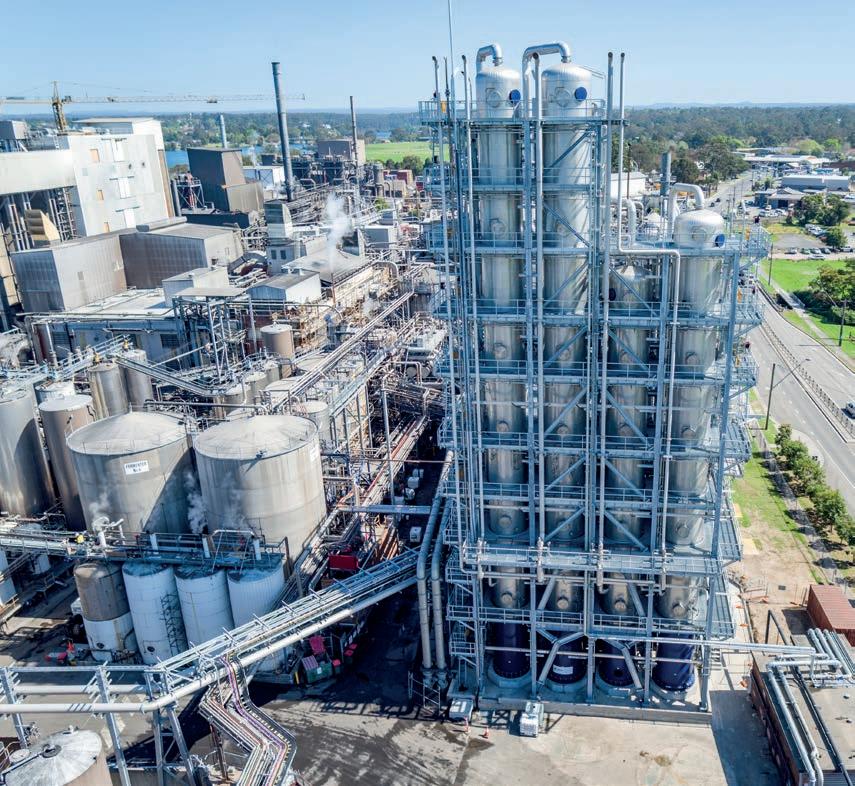Climate change
COP26
Stepping up to the ingenuity challenge
Much has already been written about last month’s COP26 – see our news story on page 5 for one example. Here, freelance writer Nick Cottam concludes that the imagination and expertise of the energy industry will be vital to achieving the changes needed to meet the climate challenge.
A
The opening plenary session of COP26 in Glasgow
s the dust settles on COP26 you could say that, amid all the haggling, the false starts, the political posturing and finally that watered down deal, it’s a good time to be in energy. For those starting out on their careers – engineers certainly, but even geologists – you are part of an industry in transition, working as it is to develop an array of new power sources for deployment at scale. How’s that for a challenge? The Glasgow Climate Pact which eventually emerged at the 11th hour from that frenetic summit was a disappointment for many. But let’s be optimistic for a moment. Behind the hard-nosed politics there are more signs of incremental change which call on the capacity for human ingenuity and an acceptance that, in this area at least, we could stand or fall together.
14 Petroleum Review | December 2021
All options are on the table The ingenuity bit comes in all shapes and sizes, from harnessing the power of the tide, to smallerscale nuclear; from solid-state batteries, to hydrogen buses. Most politicians at COP26 and their delegations understood that all viable zero carbon and low-carbon options have to be on the table if anything close to 1.5°C is to survive – and if a still joined-up global economy is to have any chance of living up to the latest set of nonlegally-binding pledges. While COP26 President Alok Sharma hailed the Glasgow Climate Pact as a ‘historic achievement’, his tears at the end of the conference indicated a sleep-deprived frustration at all the political shenanigans to water down the deal, not least those of India and China over coal. The two countries, he said, would have to ‘explain themselves to developing countries’ who would be most affected by the climate crisis. For its part, China boasted about producing more coal than ever on a single day of the conference, the message being that whatever it does on the road to net zero will be at its own pace. While China and India also came together – along with Russia, another big emitter – in refusing to sign the pledge to cut methane by
30% by 2030, there was some cause for hope that China will put its foot on the gas, so to speak, when it is good and ready. Who knows what will come out of China’s pact with the US to boost climate cooperation over the next decade, but you can bet your international dollar that if there are trading advantages to be had, then China’s decarbonisation plans will move up a few gears. For the moment, China is pledged to net zero by 2060, with no more coal investment overseas and reducing domestic reliance on coal by 2026. China, like other countries can be cagey about decarbonisation plans because it wants to secure competitive advantage – when the time is right. Cutting methane The pledge to cut methane by 30% was undoubtedly a big early headline at COP26, a commitment which, according to Fatih Birol, Executive Director of the International Energy Agency (IEA), would have a similar impact on global warming as switching all the world’s cars, trucks, ships and planes – the entire global transport sector – over to net zero emissions technologies. An IEA report, released in October, showed that rapid steps to tackle methane emissions from oil, gas and coal operations would have immediate impacts because of the potent effect of methane on global warming and the large scope for cost-effective actions. The report set out practical measures that could achieve a 75% cut in methane emissions from global fossil fuel operations by 2030. The IEA was praised at the conference for its work on methane over the last decade or so, not least its regulatory roadmap and toolkit for reducing methane leaks in the oil and gas sector. A shame then that the big three methane emitters didn’t sign this aspect of the deal. Keeping 1.5°C alive The COP devil, as ever, is in the detail and while countries must republish climate action plans by the end of next year, there is growing concern that the 1.5°C temperature rise target is in jeopardy. As Sharma commented with as much optimism as he could muster: ‘We can say with credibility that we have kept 1.5 degrees alive. But its pulse is weak.’ The latest pledges at the conference, the scientists tell us, can get us down from 52.4 to 41.9 Gt of







